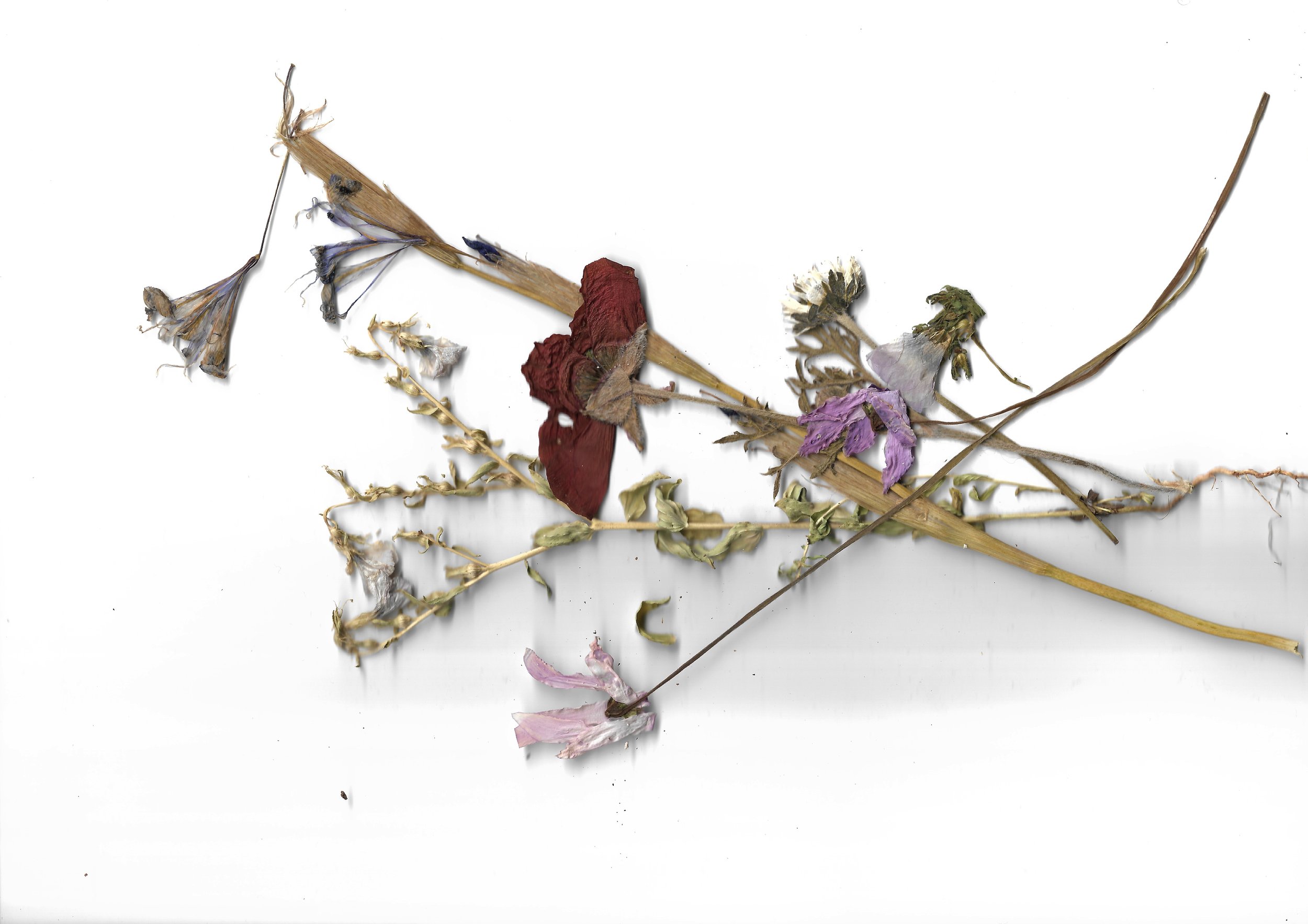A Recipe for Happiness, A.M Qattan Foundation. Curated by Yazid Anani, 2020.
The Recipe for Cleansing an Uncivilized Stench
A mother sniffs soapwort from the mouth with her nostrils shut
To induce a sneeze after childbirth and extract the placenta
A potential mother drinks a mixture of herbs
A concoction for the abortion of a fetus
A hollow vessel filled with water and spice for the body to purify and heal
Sabona (mastakal, soapwort) tamarisk, reed for plaiting, a ring of sariru gold
Tumeric root and pure salt, added, rubbed, the patient’s body
seven times
May the mastakal make the heart happy and release you
May the mastakal dispel curses and the kispu
May the mastakal make you, and I, shine!
The greens to increase milk in a sheep
The froth to wash the uterus
The root extract for halawa
To heal
To ritual
To open and close
At birth and at death
In the depths of the earth, the roots purify
On the second night, above, the pink skins blossom for bees
From the petals and leaves to the roots of the ground,
the travelers and “experts” don’t understand
“The civilized,” they said, “don’t stench of camels
But the soapwort
is a weed”
“Here was a grand Oriental picture but only in engravings
I shall say to myself, you look fine, Madam, but your feet are not clean and you smell like a camel!”
Mark Twain, his eyes see flies but our soap has gone missing
During a Global Pandemic:
I am writing to you from the 72nd remembrance of the Nakba, a day many thought would not be remembered this many decades on. More importantly, I write to you from quarantine in Ramallah during a global pandemic. Despite our traumatized history of dealing with checkpoints, curfews, and societal control by the Israeli occupation forces, this quarantine, exactly 20 years after my first experience of longterm curfew during the second intifada came at a time when I was commissioned by the AM Qattan Foundation to work on the healing plant Saponaria Officinalis. This plant was used for rituals of cleansing and as an ingredient for recipes in happiness that feels quite surreal to research during the CoronaVirus pandemic. More strangely, as Palestine began to shut down due to the virus, in early March, soapwort began blooming in its fields. From my view outside my window now from Ramallah looking west, the tells are covered in pink flowers as I read about its magical cleansing powers. In some ways I feel protected during the pandemic by the pink tells surrounding me. Below are descriptions of the plant, fictional texts, and ancient recipes I’ve written and come across during my research on Saponaria Officinalis.
A Recipe for Happiness:
Saponaria Officinalis (Soapwort)
Saponaria Officinalis, a magical plant featured extensively in an ancient therapeutic tablet found in Ashur, is used for a variety of cleansing rituals including basic laundry, abortions, cleansing the female body during the menstrual cycle, extracting the placenta after childbirth, and healing the body and spirit from negative energies. Some of these concoctions were held in amulets reminiscent of those in Tawfik Canaan’s collections and worn on the body to expel negative energies and spirits. The stone-carved tablet now held at the Istanbul Archaeological Museum is part of a collection of Neo-Assyrian tablets formed by exorcist Kisir Assur. The recipe for happiness, to be performed the first day of the year, involves anointing the body with a mix of the blue lapis lazuli stone (lazaward), filtered oil, and crushed soapwort. The person is to rub the body with this paste and tie a lazaward bead in the hem of their garment. To finally expel the negative energies, the impurities are to be transferred to two doves and a fish. A male dove flying east and a female dove flying west carry off the impurities into the distance while the fish carries them from the person’s spit into depths unknown to reside with Enki, the Sumerian god of water. The exhibition uses material components from the in-depth research and maps that rich history onto a sewn textile. The piece is inspired by the fabric amulets found in Tawfik Canaan’s hujub collection as well as illustrations of ancient cleansing procedures and rituals.





















